DRYLAND PROJECTIONS
Apart from melting glaciers, warming oceans, and extreme weather events on the rise, the increase in droughts has become a major issue due to a changing climate. Drylands will be suffering a decrease in biodiversity as the rising heat affects their biocrusts – the complex communities of many inhabitants like lichens, mosses, fungi, and bacteria living on the soil surface. The museum exhibit “Dryland Projections” is based on scientific observations of Spanish drylands and potential futures. The exhibit investigates different speculative outcomes for 2052 and if/how genetically modified organisms could become a part of dryland ecosystems. The installation has been developed in collaboration with scientists involved in the Madonna project and the Dryland Ecology and Global Change Lab in Spain.
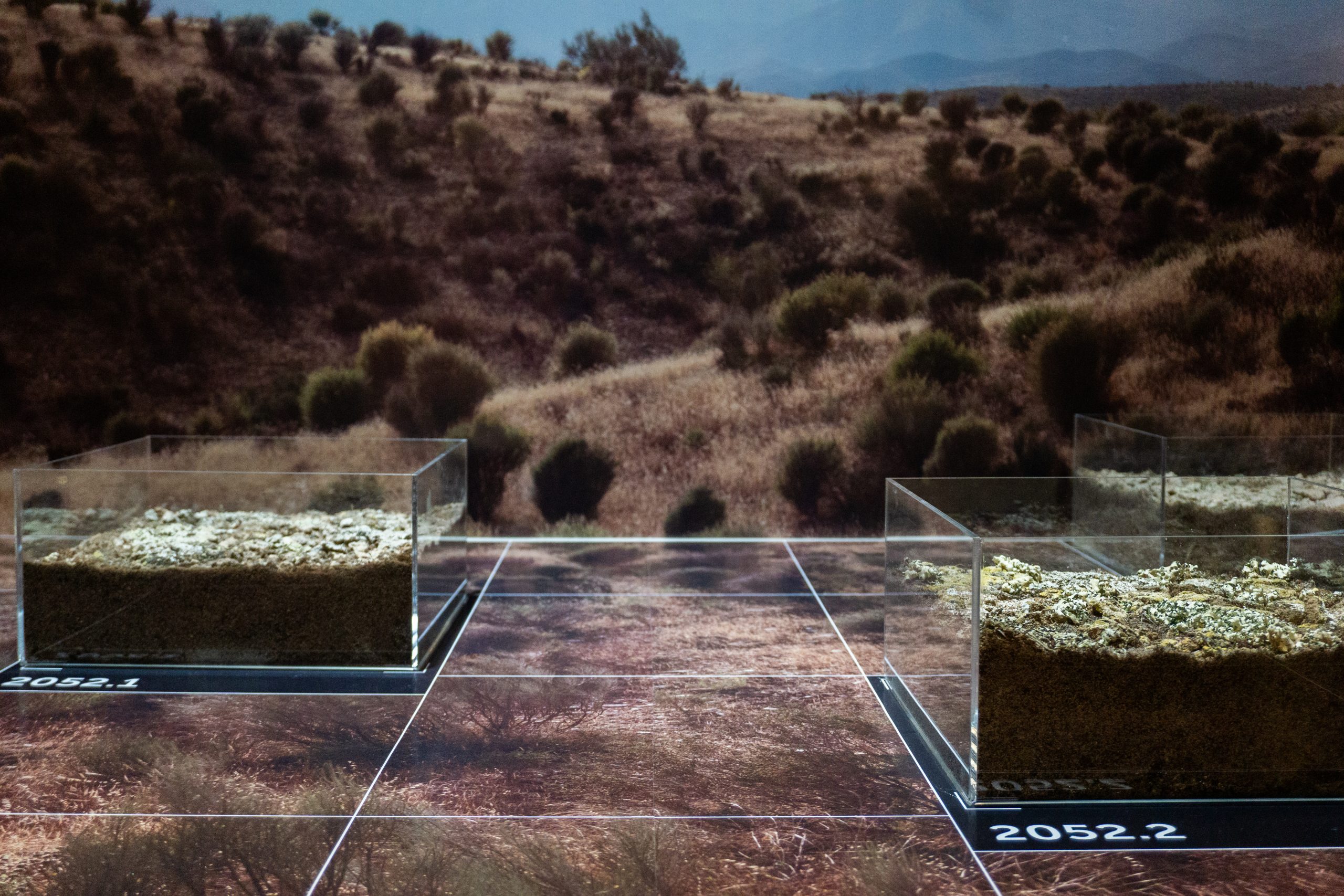
Making up 41% of the terrestrial surface, drylands in both hot and temperate locations (i.e. arid, semiarid, and dry-subhumid ecosystems) are extremely important for CO2 fixation. Since these areas are already very resilient to high temperatures, the effect of climate change on drylands is often underestimated. An approach for counteracting the negative effects of the current warming trend could be to support the biocrust communities. By modifying some of the existing species’ genes, the whole microbial system could become more resilient to increasingly dry conditions.
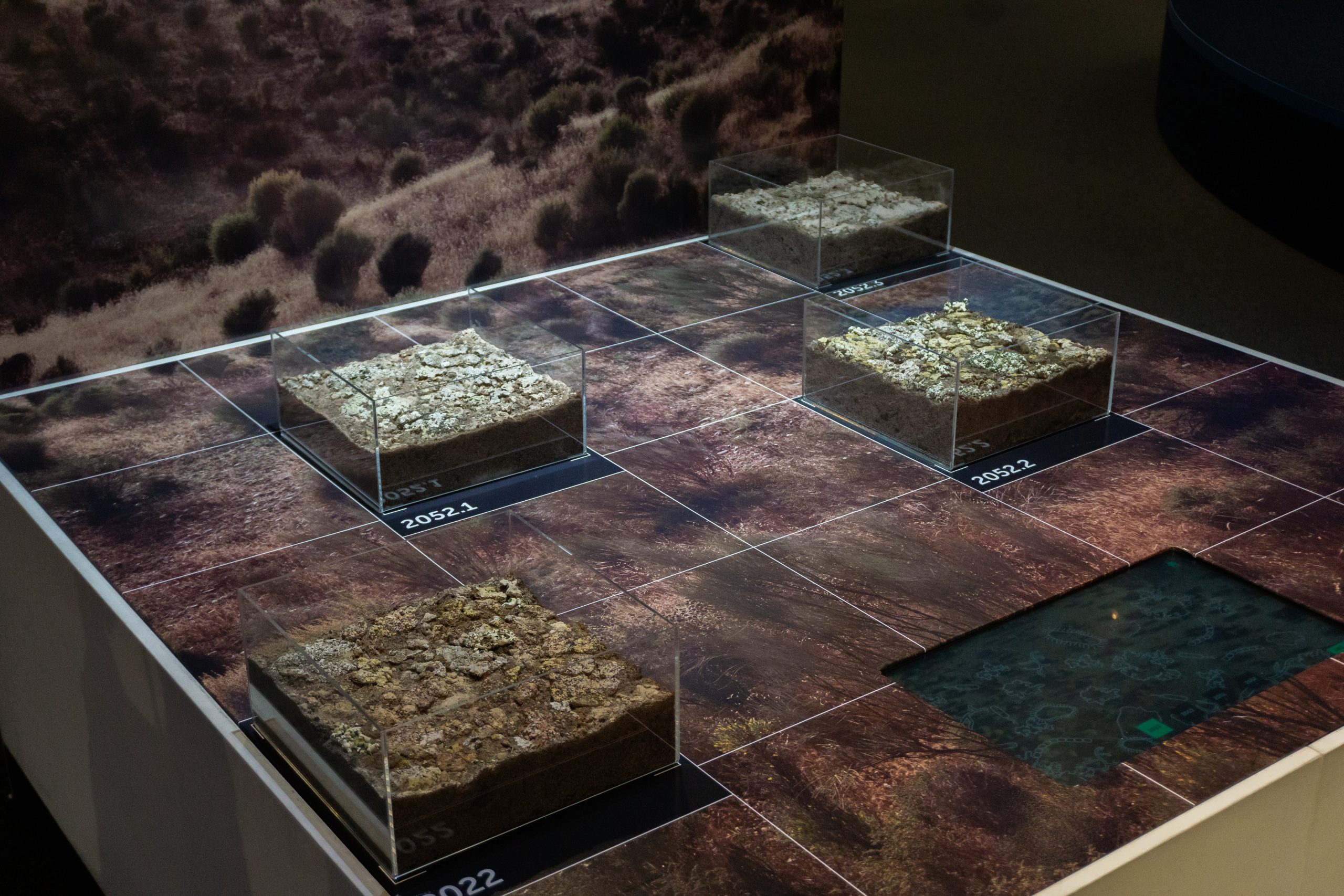
Soil crust samples collected by the Dryland Ecology and Global Change Lab from Spain’s vast drylands in the area of Aranjuez were brought into the museum, representing an array of four possible future ecological scenarios dated to 2052.
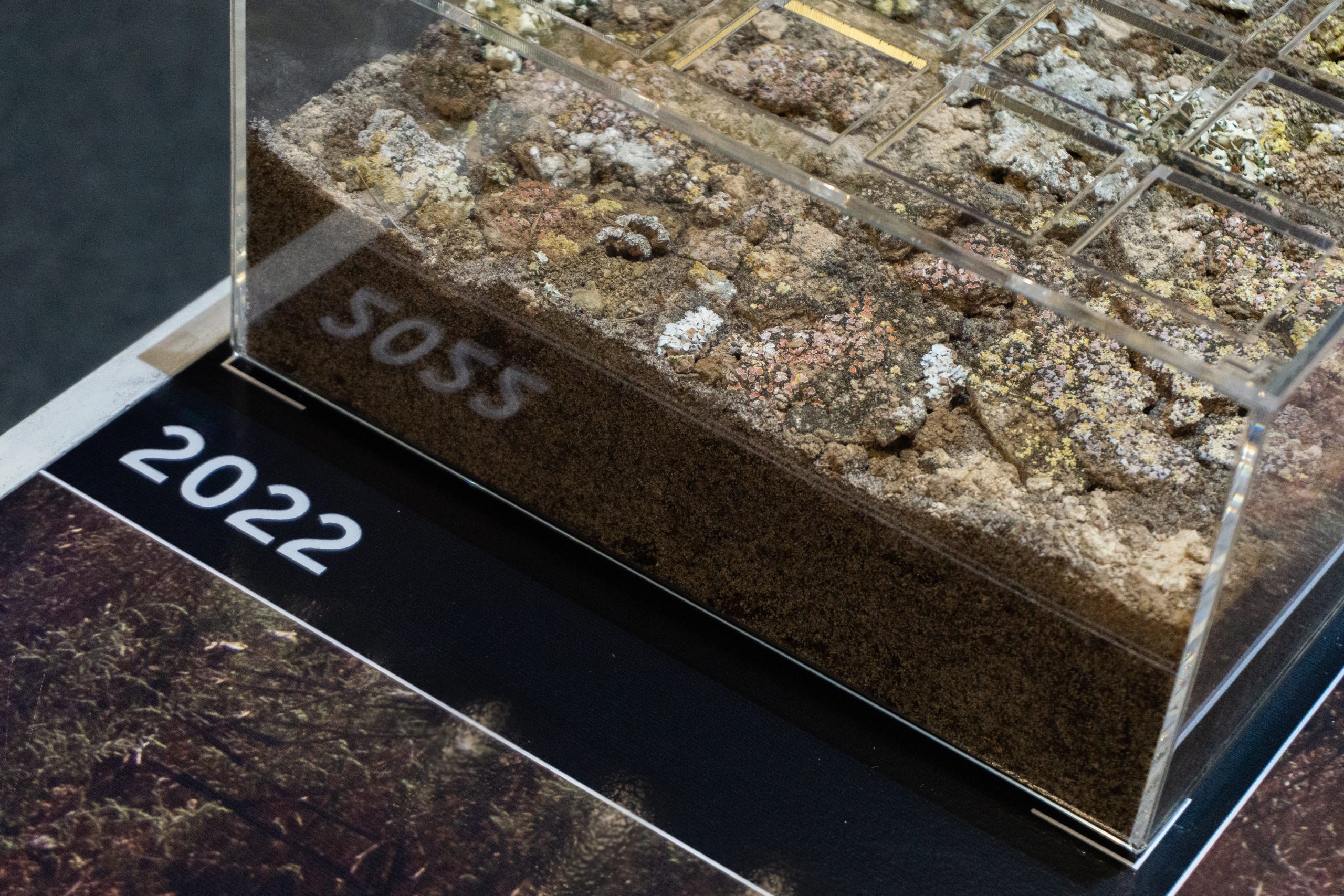
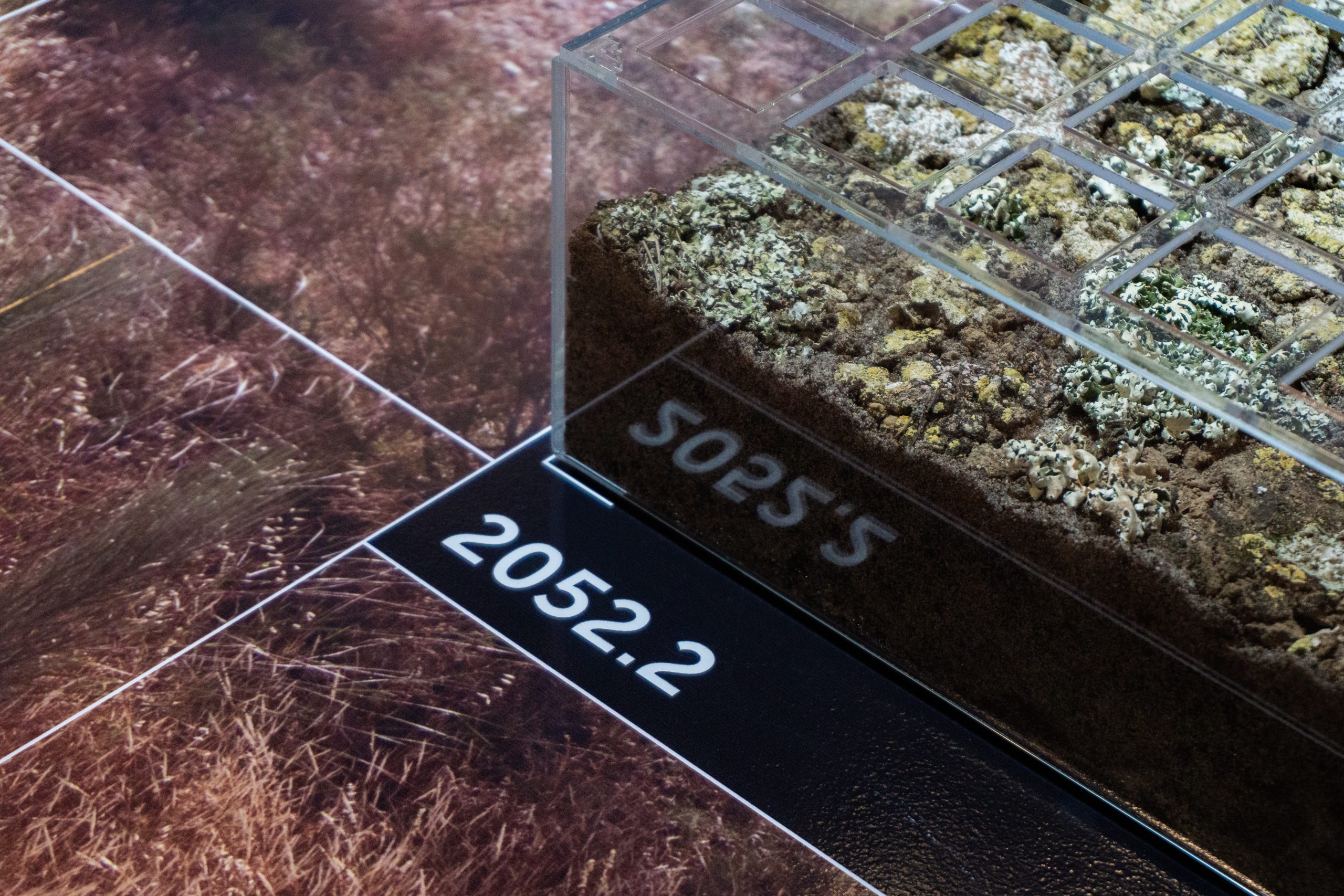
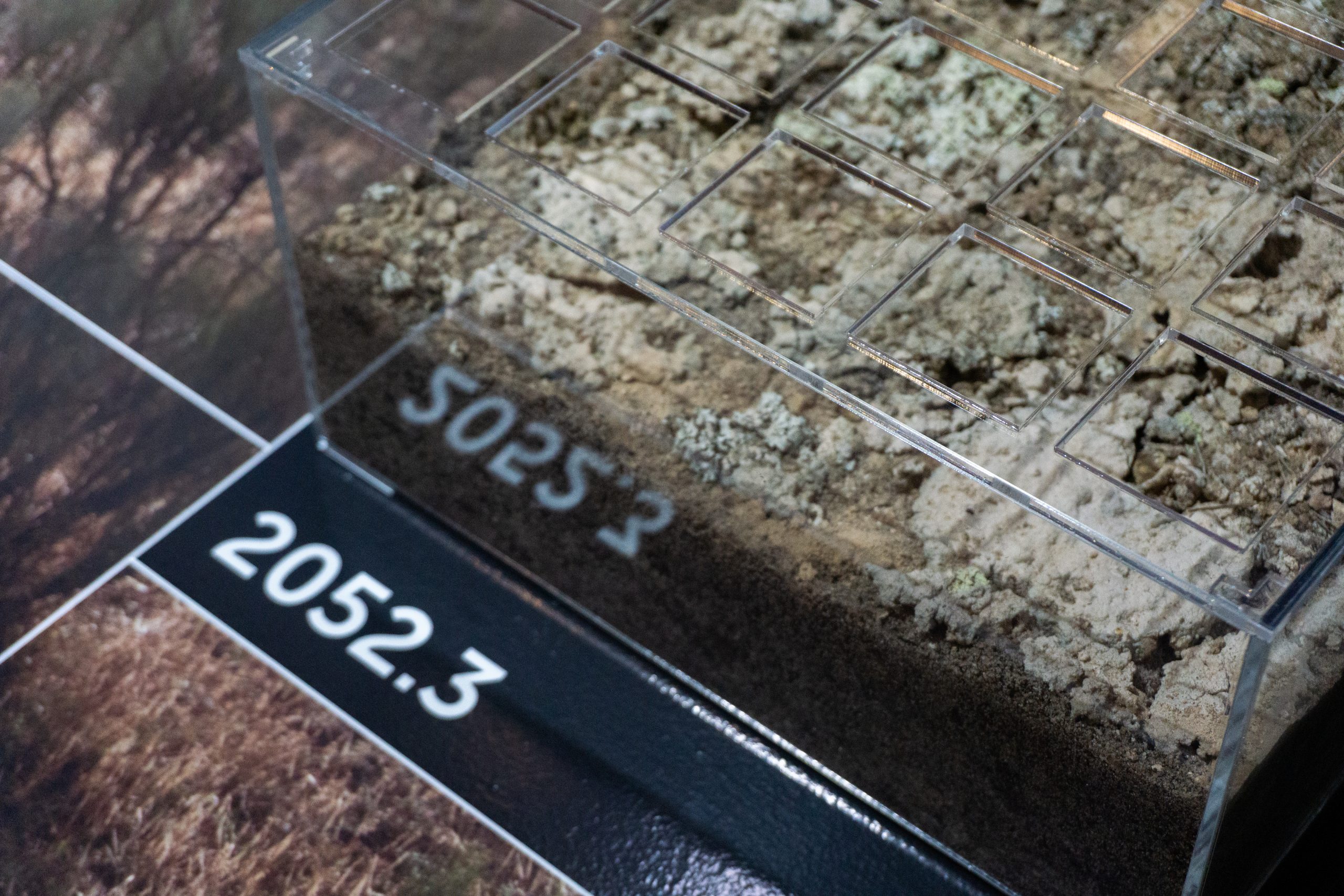
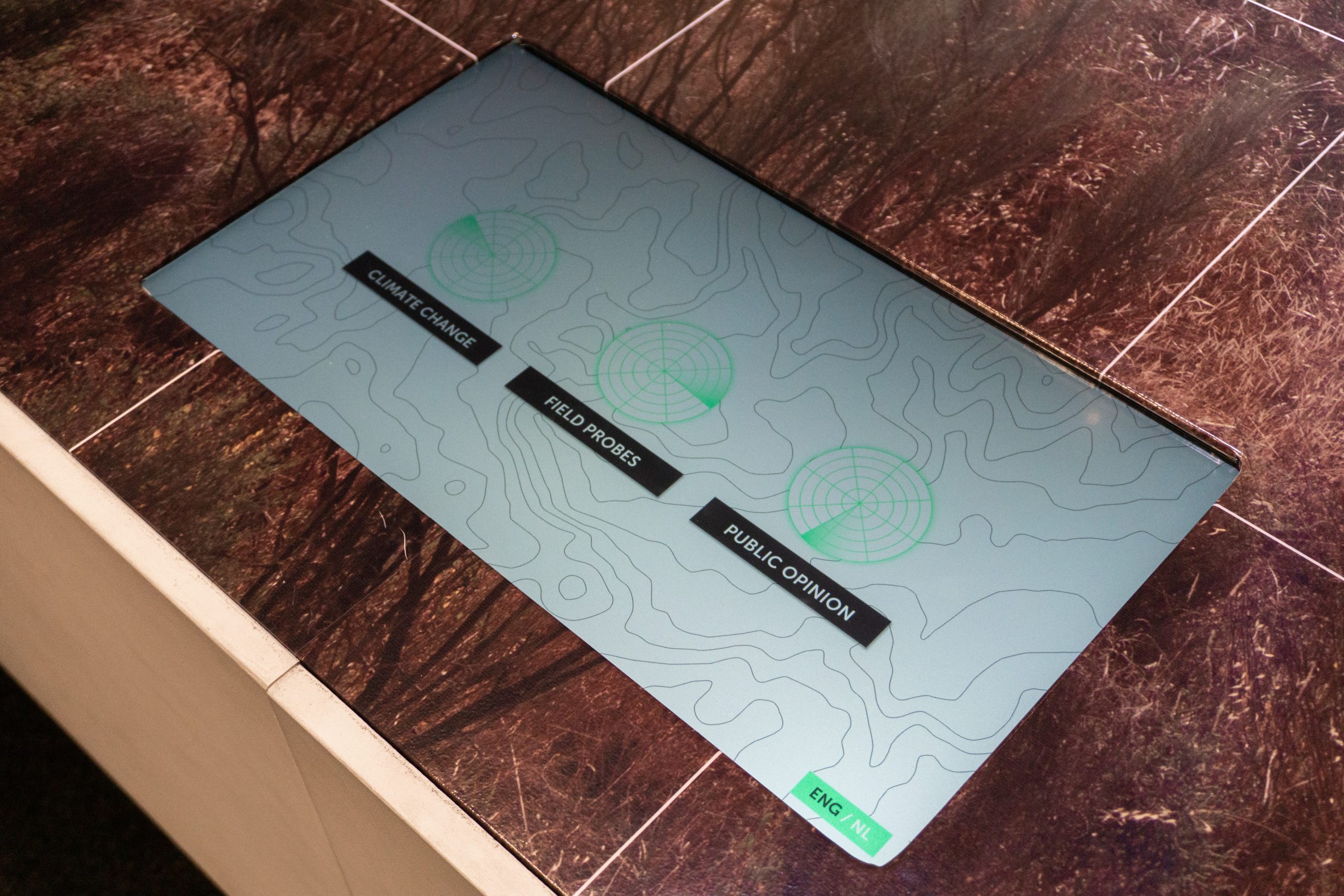
A control panel in the middle of the platform introduces the visitors to the area of Aranjuez and the future environmental challenges it will have to face. By navigating through the different field probes, people can discover the invisible and hidden life forms of the biocrust and explore how the microbial communities are transformed in each scenario, due to changing climate conditions and/or the introduction of modified bacteria.
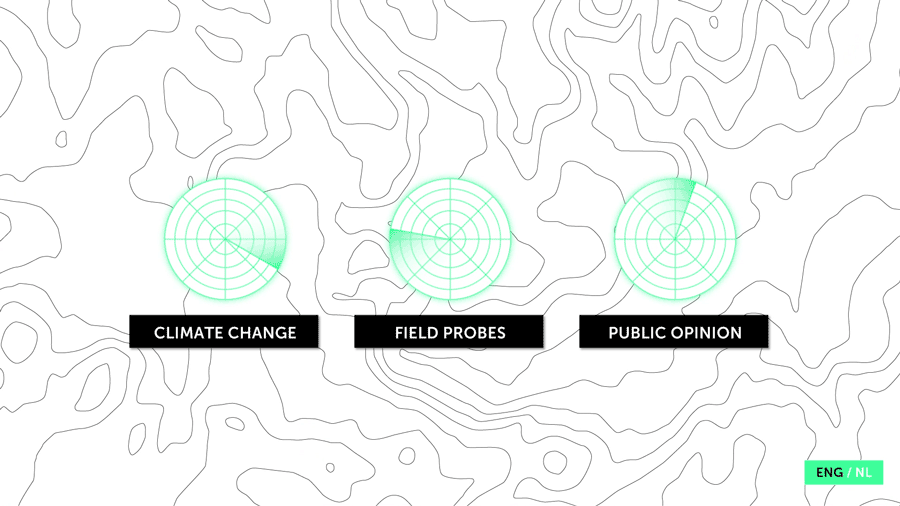
The soil samples differ in their biodiversity, depicting scenarios of abundant communities full of lichen, mosses, fungi, algae and bacteria; of unbalanced communities taken over by one species; and of reduced biodiversity leading to fragile ecosystems.
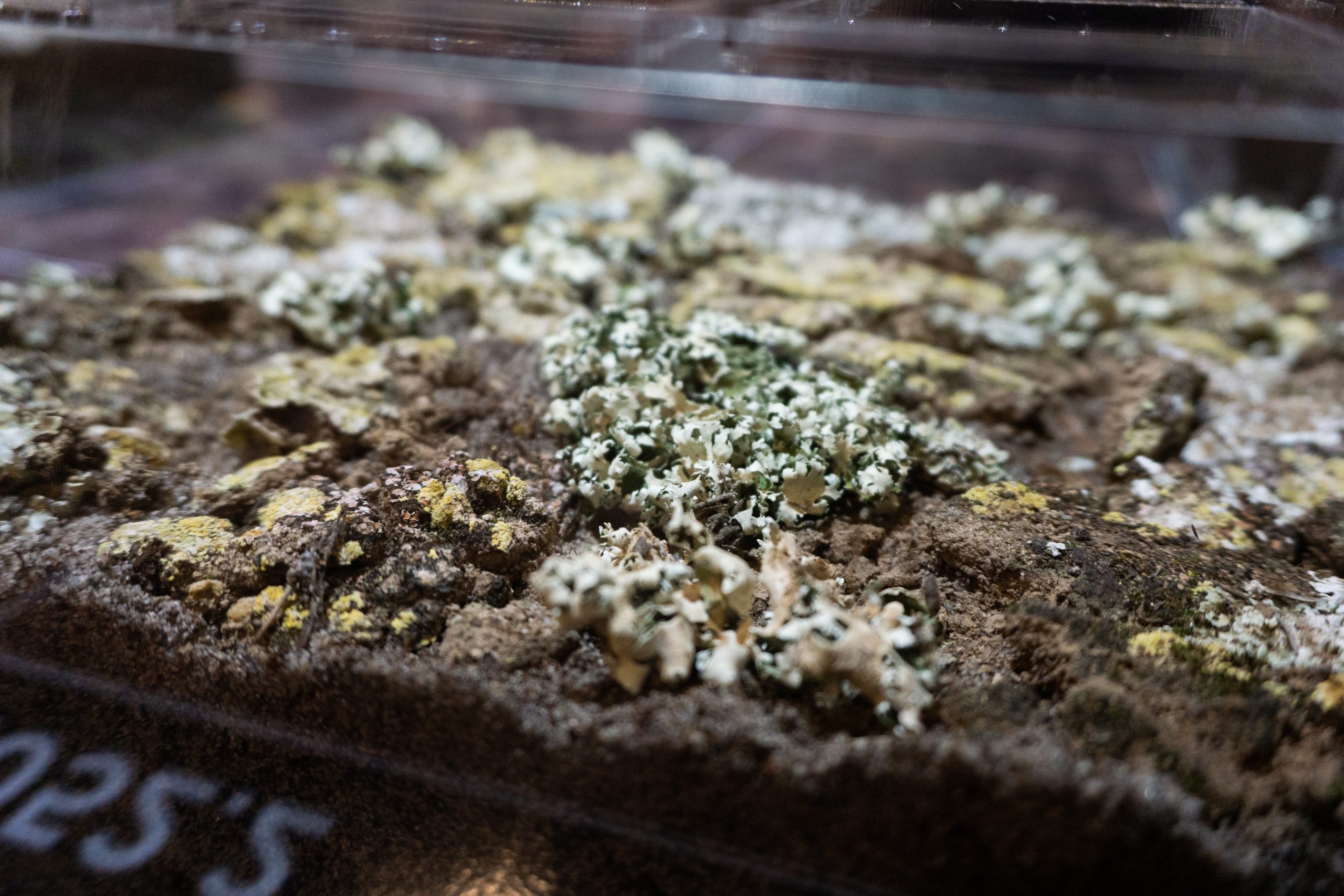
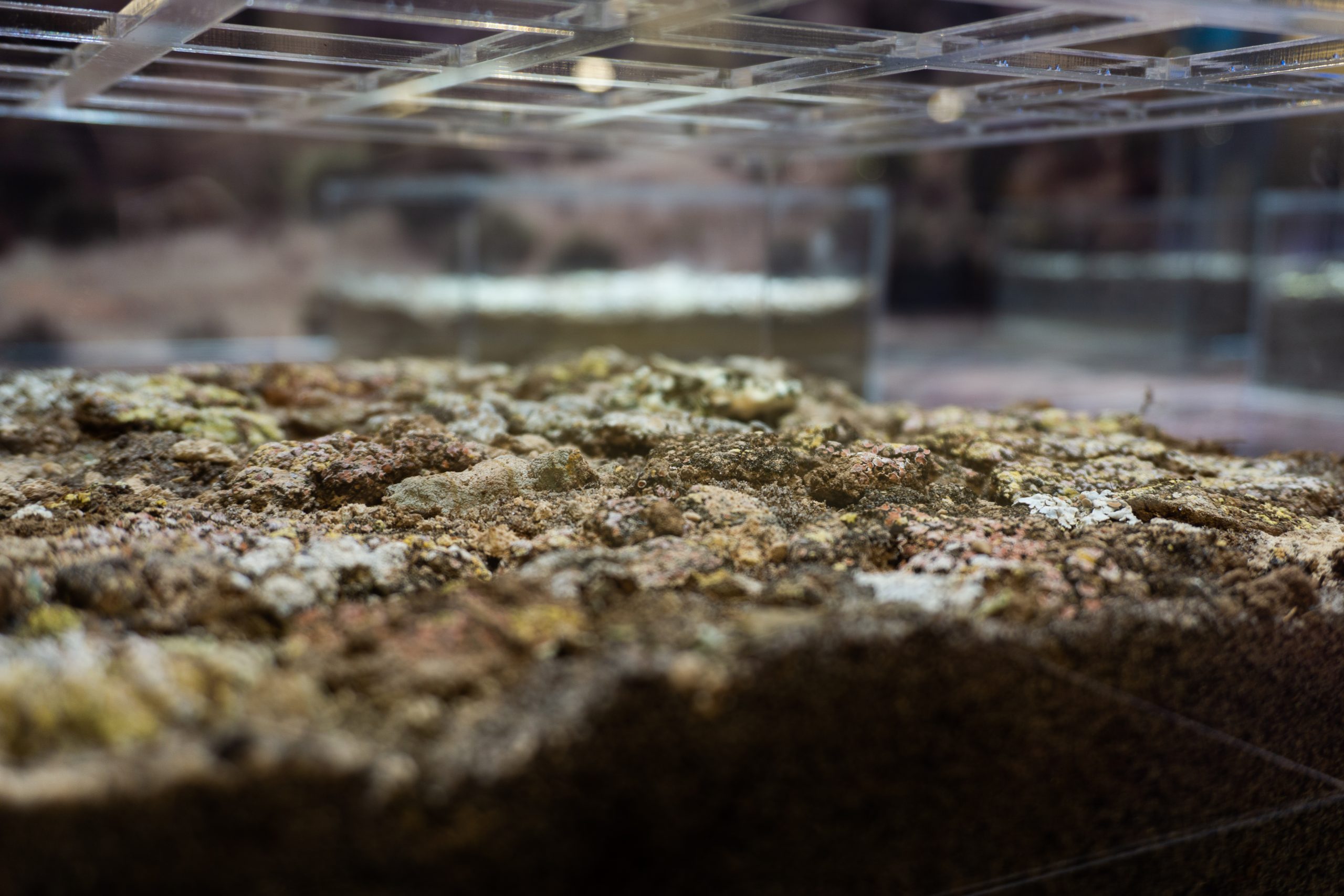
“Dryland Projections” introduces the option to mitigate climate change by creating more resilient ecosystems that are part natural part synthetic and it introduces a critical approach to the topic of engineering the climate:
What will happen, when technology works in cooperation with nature? How do microorganisms deal with climate change or the introduction of new species into their habitat? What happens, if we don’t take any measures against global warming?
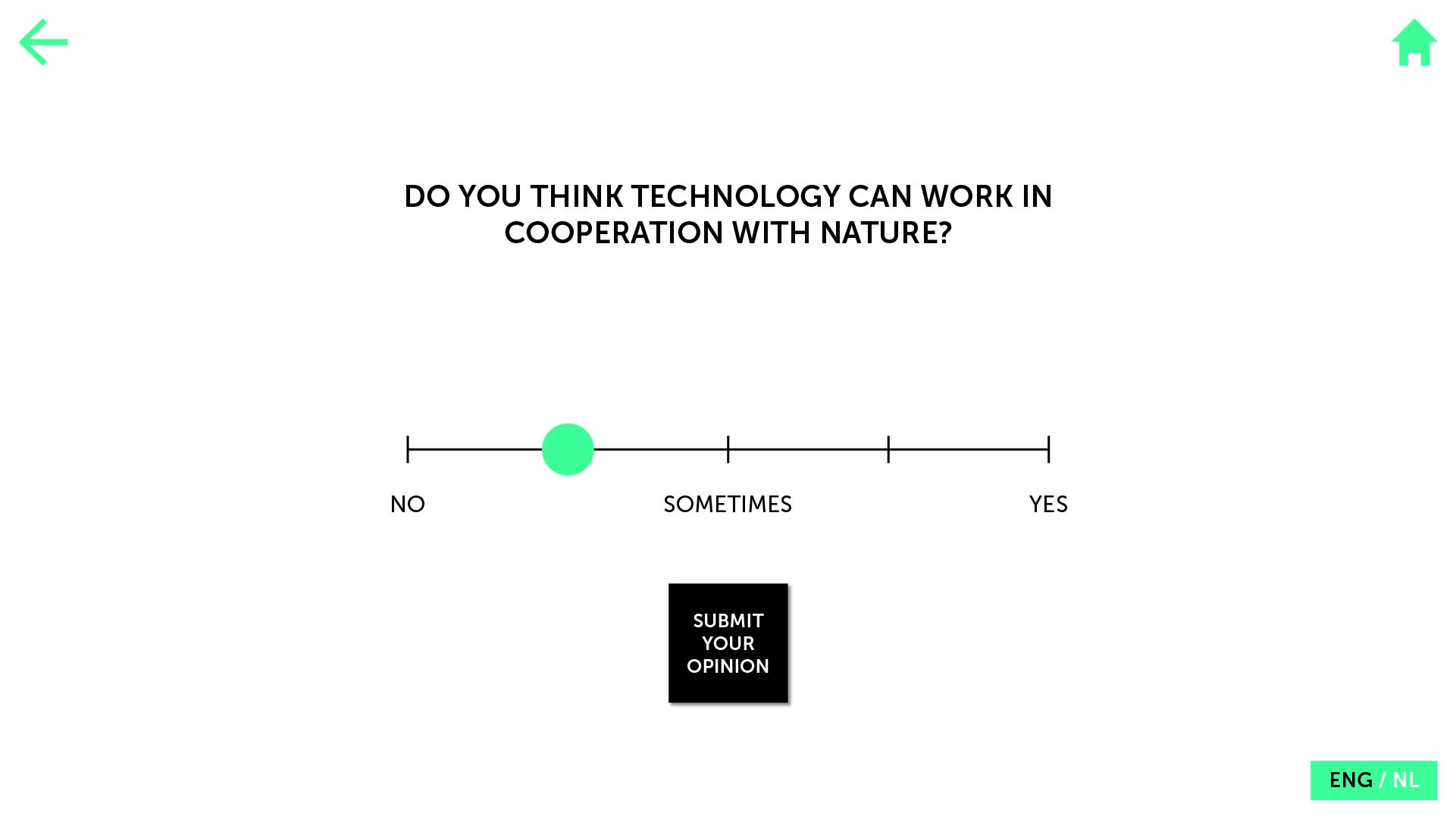
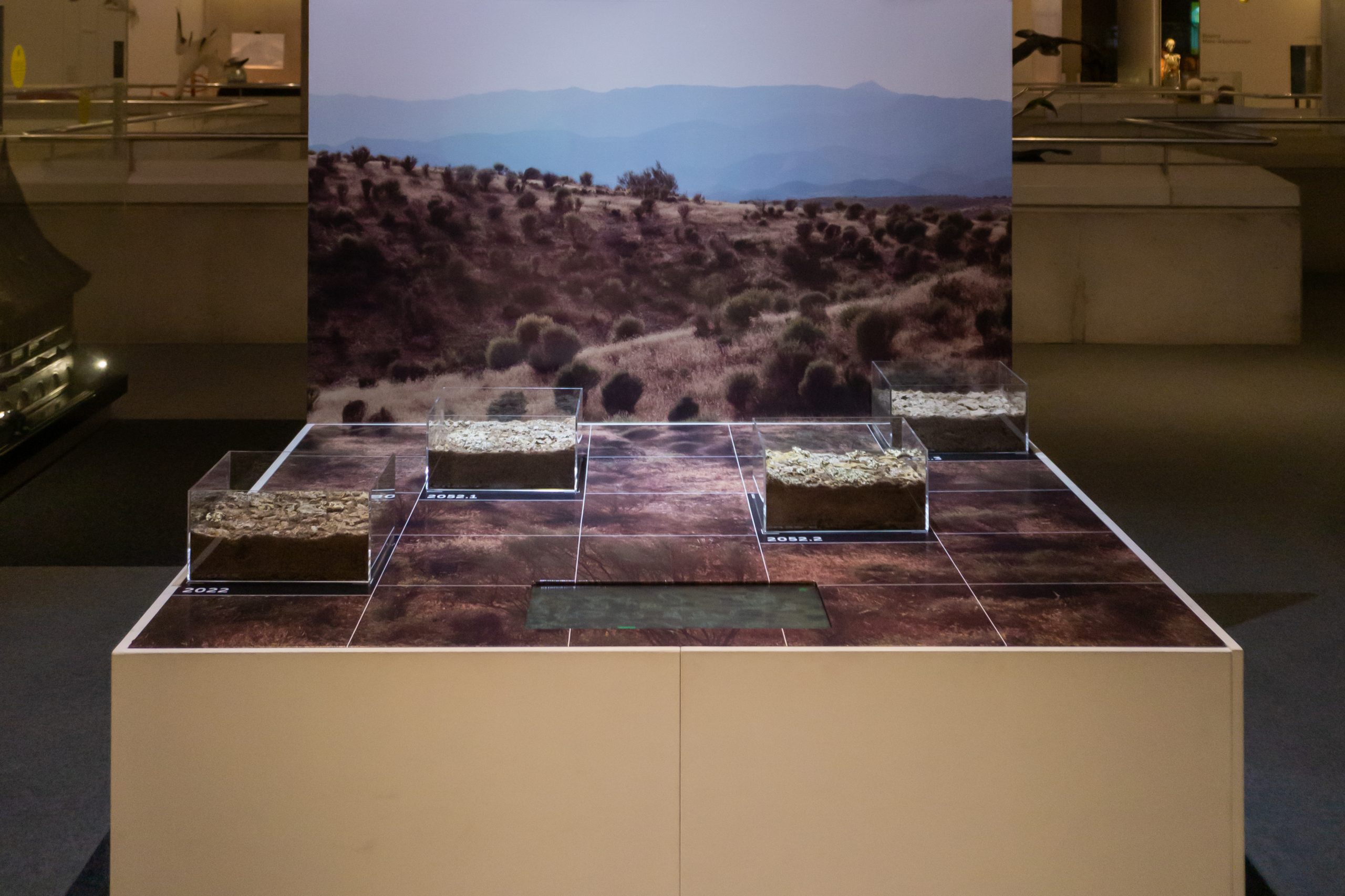
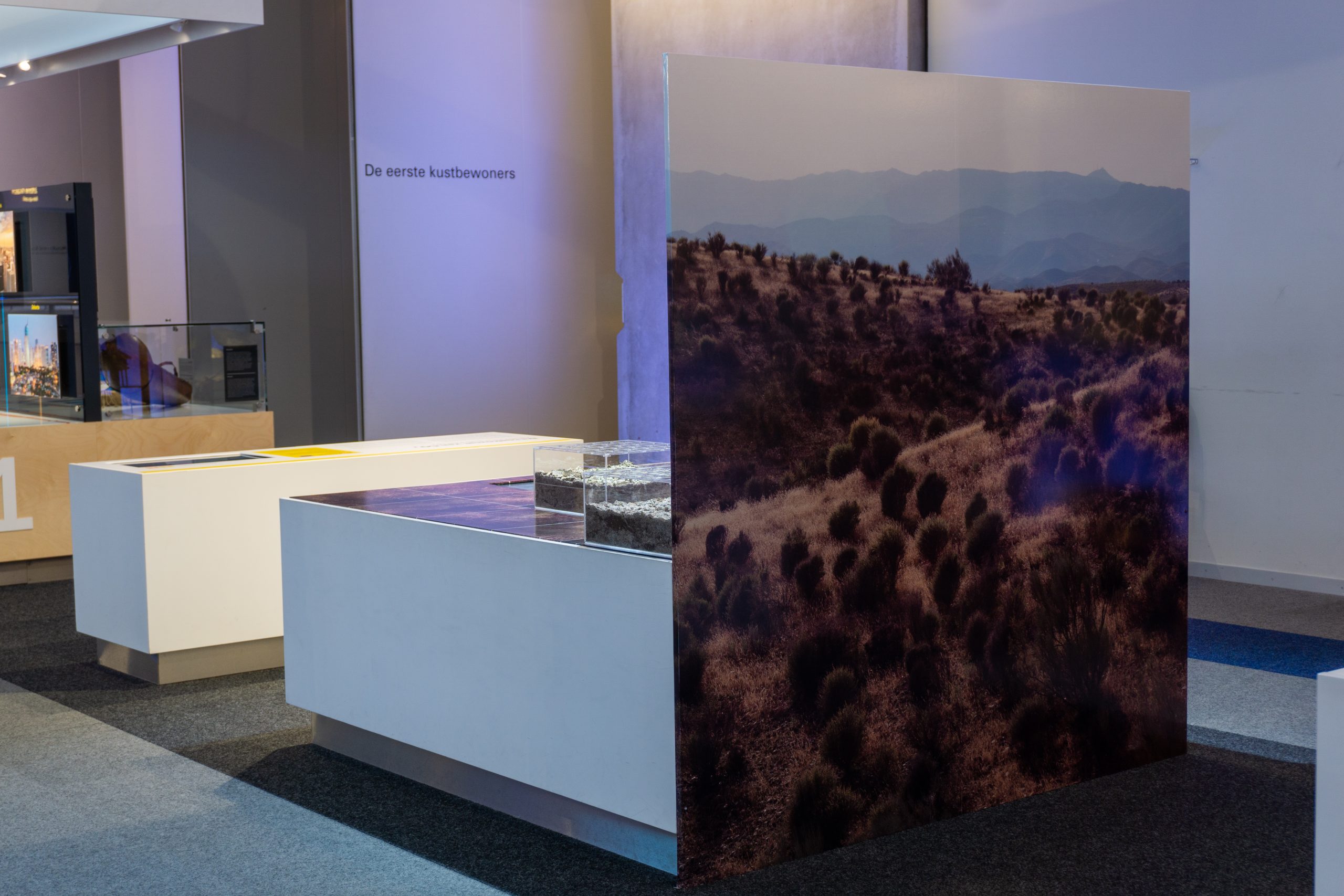
“Dryland Projections” is currently being displayed at Museon, a museum of science and culture based in The Hague (The Netherlands) boasting over 200.000+ visitors per year, of which around 50.000 are school children. The installation is right now in their permanent exhibition “One Planet“, which challenges visitors to learn about current global issues – with the United Nations’ Sustainable Development Goals as a starting point – and the search for solutions.
If you are interested in hosting “Dryland Projections” in a museum, gallery, fair or at your event, please contact us here.
MADONNA is a Research and Innovation project funded by the European Commission under grant agreement H2020-FETOPEN-1-2016-2017-766975.